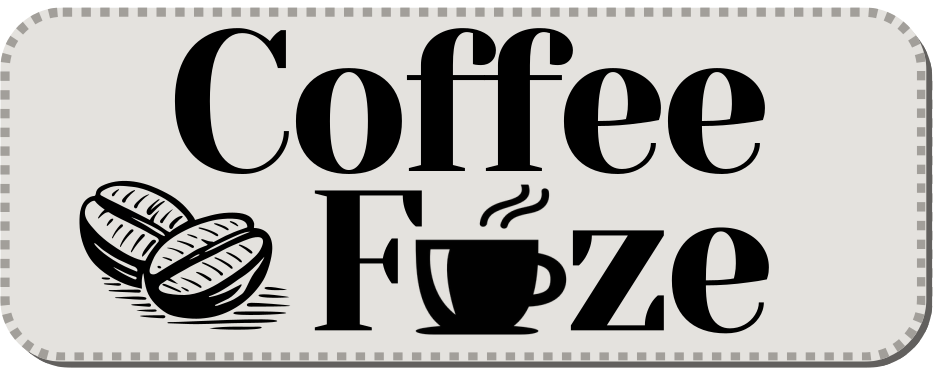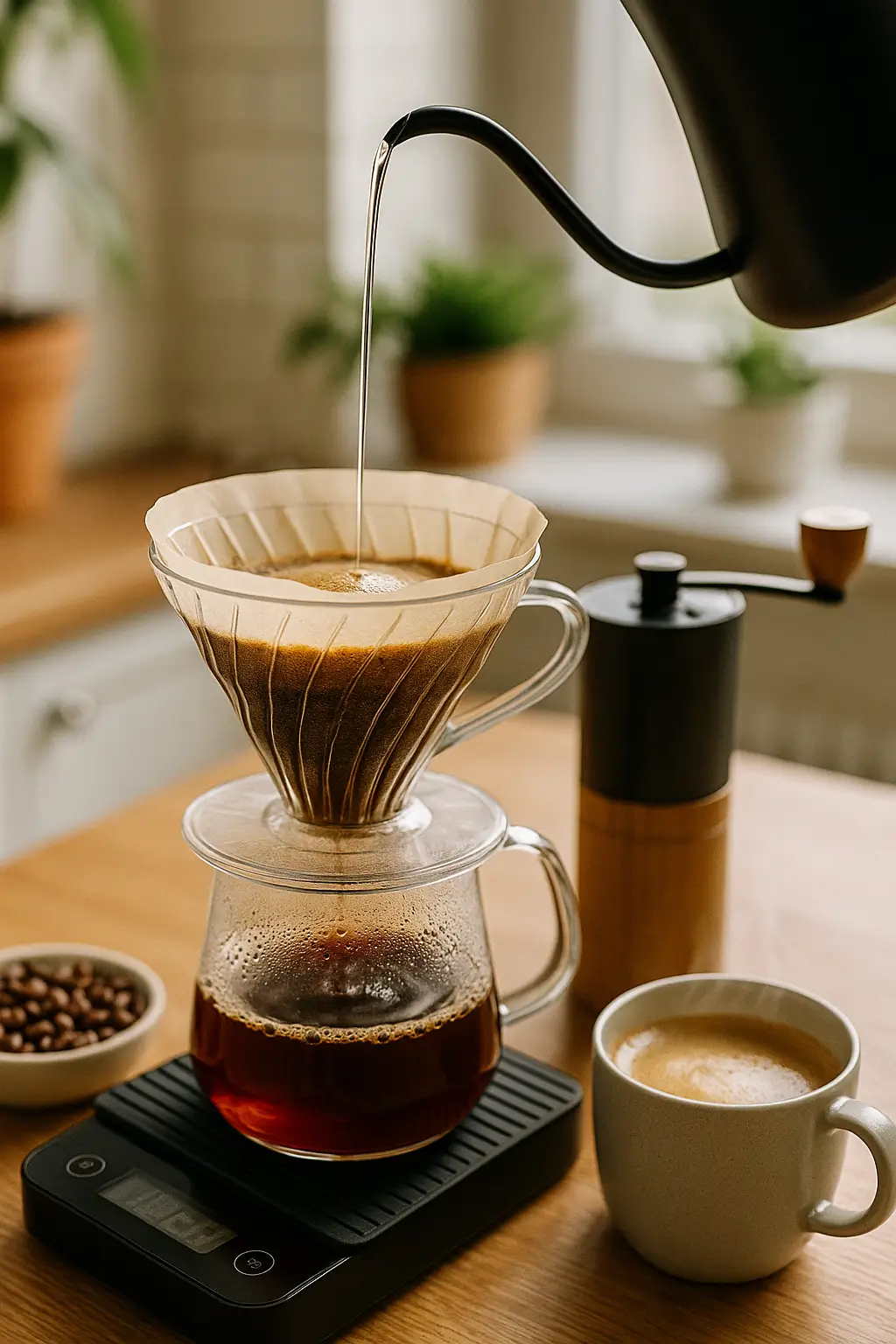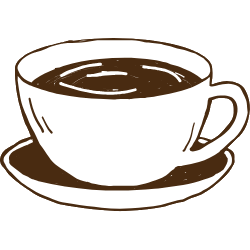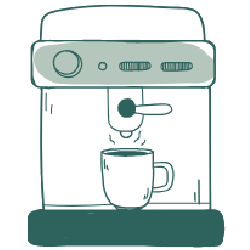Do you want to brew great coffee every time? A methodical coffee guide gives you a precise, measured way to make coffee. It’s not guesswork. You control and measure every variable. This approach helps any home brewer make consistent, delicious coffee. It transforms your daily cup.
This systematic control offers real advantages. You get unmatched consistency. Your brew tastes great every single time. It also helps you understand and enhance your beans’ unique characteristics.
A methodical approach helps you understand extraction. You learn how small adjustments change the final taste. It also means less waste. You use the right amount of coffee. Traditional methods, like Cowboy Coffee or Turkish coffee, focus on simplicity and cultural experience. A methodical approach focuses on repeatable excellence. It helps you deeply appreciate the science of brewing.
Understanding your coffee beans
Your coffee bean is the primary source of flavor. It forms the basis of any methodical coffee guide. Each coffee fruit has different parts: the coffee pulp, coffee mucilage, coffee husk, and the inner coffee kernel, which is the bean itself. All these parts, and how they are processed, influence the final flavor. Knowing these components helps you appreciate the bean’s journey.
Different coffee bean varieties have distinct characteristics. They deeply impact the finished cup’s taste and coffee body. Arabica beans often offer aromatic, complex flavors with higher acidity. Robusta beans give stronger, bolder notes and more crema. This contributes to a robust mouthfeel. Your variety choice directly influences the initial taste potential.
The roast level drastically alters the bean’s inherent flavors. It also changes the coffee body and mouthfeel. Light roasts preserve more of the bean’s original acidity and fruit notes. Dark roasts develop bitter, chocolaty undertones and a heavier body. Picking the right roast level is crucial for the flavors you want.
Coffee freshness is vital for optimal flavor. Grinding coffee beans just before brewing preserves volatile aromas and oils. This ensures the bean’s fullest potential. Stale coffee, even with perfect brewing, delivers a dull cup.
Key brewing parameters
Key brewing parameters are crucial. They ensure optimal coffee extraction and a desirable flavor profile every time. Precise control over these variables helps you consistently achieve your desired cup. Each parameter helps dissolve soluble compounds from your coffee grounds.
The coffee-to-water ratio sets the foundational balance for your brew. A common “golden ratio” is 1:18. This means one part coffee to eighteen parts water by weight. You can adjust it based on your brewing method and your taste. Measure both coffee and water precisely by weight using a kitchen scale. This ensures reliable results.
Grind size directly influences the surface area available for coffee extraction. This impacts the final flavor. A coarse grind works for longer immersion methods like French Press or Cold Brew. Here, water has more time to interact with larger particles. A medium grind suits drip coffee, pour-over, and Chemex brewers. It offers balanced extraction. A fine grind is necessary for high-pressure methods like espresso. Quick extraction is key here.
The wrong grind size creates problems. If your grind is too coarse, you get under-extraction. This makes your coffee sour, weak, or watery. Not enough flavor compounds dissolve. If your grind is too fine, you get over-extraction. This creates bitter, astringent, or hollow flavors. Undesirable compounds pull from the coffee.
Water temperature greatly affects how fast coffee extracts. The ideal range for most brewing methods is 195°F to 205°F (90-96°C). This range efficiently dissolves good flavors without scorching the grounds. Water that is too cold leads to under-extraction and sourness. Water that is too hot can cause over-extraction and bitterness.
Brew time, or extraction duration, means how long water touches the coffee grounds. It varies by brewing method and grind size. French Press brewing usually takes 4-5 minutes for full immersion. Pour-over methods might take 2-4 minutes, depending on grind and pour technique. Espresso extraction happens in mere seconds. It demands extreme precision. Use reliable timing devices. They prevent both under-extraction and over-extraction.
Finally, use precise measurement tools and techniques. They are essential for accuracy and consistency. A good kitchen scale measures ingredients by weight. This is far more consistent than volume. A reliable timing device, often part of the scale, ensures precise contact time. These tools help you repeat successful brews. They also help you fix less successful ones.
Mastering popular brewing methods
You can master popular home brewing techniques. Follow detailed, methodical instructions for each method. These instructions apply the key parameters we just discussed. They ensure a delicious and consistent coffee experience.
French Press brewing
The French Press method makes rich, full-bodied coffee. Many people love it. It uses a simple immersion process. For a consistent cup, measure your ingredients precisely.
- Coffee-to-Water Ratio: Use a ratio of 1:15 to 1:17 (e.g., 60g coffee to 1000ml water),
- Grind Size: Use a coarse grind, similar to sea salt, to prevent over-extraction and sludge,
- Water Temperature: Target 200°F (93°C) for optimal flavor extraction,
- Brew Time: Steep the coffee for 4 minutes,
- Instructions:
- Heat water to the target temperature.
- Add coarsely ground coffee to your French Press.
- Pour hot water evenly over the grounds, ensuring full saturation.
- Gently stir the bloom to ensure all grounds are wet, then place the lid on without pressing.
- Steep for 4 minutes.
- Slowly press the plunger straight down, separating the grounds from the liquid.
- Pour immediately to prevent continued extraction.
- Equipment: French Press, kettle, kitchen scale, timing device,
- Troubleshooting: If your coffee tastes muddy, your grind might be too fine; if it’s weak, increase brew time or adjust ratio.
Drip coffee brewing
Drip coffee offers convenience and consistent results. It takes minimal effort. This automated method is popular for everyday brewing. A good drip coffee machine helps you get a smooth cup.
- Coffee-to-Water Ratio: Aim for 1:16 to 1:18 for balanced flavor,
- Grind Size: Use a medium grind, resembling table salt, for proper flow,
- Water Temperature: Most machines automatically heat water to an acceptable range (195-205°F / 90-96°C),
- Brew Time: This depends on your machine, typically 5-8 minutes for a full pot,
- Instructions:
- Place a fresh paper filter into the machine’s filter basket.
- Add measured medium-ground coffee into the filter.
- Fill the water reservoir with fresh, filtered water according to your ratio.
- Turn on the drip coffee machine and let it brew.
- Serve once the brewing cycle completes.
- Equipment: Drip coffee machine, paper filters, kitchen scale,
- Troubleshooting: If coffee is weak, increase coffee dose; if too bitter, clean your machine more frequently.
Pour-over method
Pour-over brewing, using devices like the V60 or Kalita Wave, makes a clean, complex cup. It highlights distinct flavor notes. This method needs careful technique and attention. You control the water flow for optimal extraction.
- Coffee-to-Water Ratio: A ratio of 1:15 to 1:17 is commonly preferred,
- Grind Size: Use a medium grind, slightly finer than drip coffee,
- Water Temperature: Maintain 200-205°F (93-96°C),
- Brew Time: Aim for 2:30 to 4 minutes depending on volume and desired strength,
- Instructions:
- Rinse your paper filter in the pour-over cone with hot water, then discard the rinse water.
- Add measured medium-ground coffee to the wet filter.
- Pour about twice the coffee weight in water to “bloom” the grounds; wait 30-45 seconds.
- Slowly pour the remaining water in concentric circles, avoiding the edges.
- Allow all the water to drain through the coffee bed.
- Serve the clean, complex coffee immediately.
- Equipment: Pour-over cone, kettle, paper filters, kitchen scale, timing device,
- Troubleshooting: If your pour-over drains too slowly, your grind might be too fine; if too fast, it’s too coarse.
Chemex brewing
Chemex brewing is a refined pour-over method. It gives you an exceptionally clean and balanced coffee cup. Its unique thick filter absorbs more sediment and oils. This results in a bright and crisp beverage.
- Coffee-to-Water Ratio: A ratio of 1:15 to 1:17 is effective,
- Grind Size: Use a medium grind, slightly coarser than for typical pour-over, given the thicker filter,
- Water Temperature: Target 200-205°F (93-96°C),
- Brew Time: Expect a total brew time of 4-5 minutes,
- Instructions:
- Place the pre-folded thick paper filter into the top of the Chemex brewer, ensuring the thickest side faces the pouring spout.
- Rinse the filter thoroughly with hot water to remove paper taste and preheat the brewer; discard rinse water.
- Add your measured medium-ground coffee to the filter.
- Pour a small amount of water to bloom the coffee for 30-45 seconds.
- Continue pouring the remaining water slowly and steadily in circles, avoiding pouring directly onto the filter walls.
- Allow all the water to fully drain through the grounds.
- Remove the filter and serve the clean and balanced coffee.
- Equipment: Chemex brewer, kettle, specific Chemex filters, kitchen scale, timing device,
- Troubleshooting: If coffee tastes muddy, ensure your filter is properly seated; if bitter, your water might be too hot or grind too fine.
Cold Brew Coffee
Cold Brew Coffee uses time, not heat, for extraction. It makes a smooth, low-acid coffee concentrate. This method is very forgiving, but needs patience. Its lower acidity is gentler on your stomach.
- Coffee-to-Water Ratio: Use a concentrated ratio, typically 1:8 to 1:10 (e.g., 100g coffee to 800ml water),
- Grind Size: A very coarse grind is essential to prevent over-extraction and sediment,
- Water Temperature: Use cold or room temperature filtered water,
- Brew Time: Steep for a long duration, 12-24 hours, in the refrigerator,
- Instructions:
- Combine coarsely ground coffee and cold, filtered water in a large container.
- Stir gently to ensure all grounds are saturated.
- Cover the container and refrigerate for 12 to 24 hours.
- Strain the coffee concentrate through a fine-mesh sieve lined with cheesecloth or a paper filter.
- Dilute the concentrate with water or milk to your preference before serving.
- Equipment: Large container, fine-mesh sieve or cold brew system, cheesecloth or paper filter,
- Troubleshooting: If your cold brew is too weak, increase steeping time or coffee amount; if too strong, dilute further.
Achieving perfect espresso
Perfect espresso needs particular precision. It’s a core part of any methodical coffee guide. Espresso is a concentrated coffee with a distinctive crema. You make it by forcing hot, pressurized water through finely ground coffee. The espresso machine itself is a complex tool. Handle it carefully.
An espresso machine has several essential parts that work together. The group head delivers the hot, pressurized water to the coffee. The portafilter is a handled filter basket that holds the ground coffee. The steam wand froths milk for lattes and cappuccinos. Understanding these parts helps you brew better.
You must strictly control key espresso brewing parameters for a perfect shot. A very fine grind, like powdered sugar, is crucial. It provides the necessary resistance for proper extraction. The coffee-to-water ratio is very specific. It’s usually 1:2 to 1:3. For example, 18g coffee yields 36-54g liquid espresso. Even and firm tamping compacts the grounds into a uniform puck. This prevents channeling and helps even extraction. The target shot timing, usually 25-30 seconds, shows a balanced extraction.
Here is a step-by-step espresso guide:
- Measure your whole beans, typically 18-20 grams, and grind them to a fine consistency immediately before brewing.
- Fill the portafilter basket evenly with the freshly ground coffee.
- Tamp the coffee firmly and evenly with consistent pressure to create a dense, flat puck.
- Insert the portafilter securely into the group head of your espresso machine.
- Place a pre-warmed demitasse cup under the spouts and immediately start the extraction.
- Observe the shot’s flow and color, aiming for a consistent stream and target shot timing of 25-30 seconds.
- Serve the rich, concentrated espresso immediately to enjoy its peak flavor and crema.
Troubleshooting espresso issues means recognizing signs of wrong extraction. Under-extraction often results in a sour, weak, or watery shot with thin crema. This might mean too coarse a grind, not enough coffee, or too short a brew time. Over-extraction makes a bitter, astringent, or hollow-tasting shot. This could be due to too fine a grind, too much coffee, or too long a brew time. Adjust one variable at a time. This helps you find the problem.
Decoding coffee body and flavor
A methodical coffee guide helps you decode coffee body and flavor profiles. It shows how controlled brewing parameters directly influence these sensory experiences. Understanding these connections helps you consistently tailor your cup. It reveals the science behind every sip.
Coffee body describes the texture, weight, and richness of the coffee in your mouth. Mouthfeel refers to the tactile sensation it creates. A French Press brew usually has a full body because of suspended solids. A pour-over makes a cleaner, lighter body due to its filtration. The roast level also plays a huge part. Dark roasts often have a heavier body than light roasts.
Your brewing method, grind size, and brew time all deeply impact coffee body. For example, a finer grind in an espresso gives a thick, syrupy body. A longer brew time in a French Press can lead to a more viscous body. Experiment with these variables. This lets you adjust the coffee’s perceived weight.
Adjusting parameters like coffee-to-water ratio, grind size, water temperature, and brew time directly affects the acidity, bitterness, and aroma in the final flavor. Water that is too hot can increase bitterness. Water that is too cold might cause too much sourness. The methodical approach helps you manipulate these factors on purpose.
This deep understanding helps you find your personal preferences. It encourages valuable experimentation. Change one variable at a time. You can then pinpoint exactly what creates your ideal cup. This transforms casual brewing into an informed, enjoyable process of discovery.
Why a methodical guide matters for consistency
A methodical coffee guide is essential for consistent coffee. It gives you unmatched control and precision over every step of brewing. You meticulously manage brewing parameters. You remove guesswork. You achieve superior consistency in every cup. This structured approach simplifies your journey to a perfect brew.
Precision in brewing parameters directly leads to superior flavor clarity. You can replicate your favorite flavors consistently. You understand exactly what variables produced that delicious result. This systematic mastery builds your confidence and competence.
Embracing this guide encourages continuous experimentation. You can fine-tune your techniques. You adapt to different beans or preferences. Follow these clear, step-by-step instructions. You will quickly become a coffee expert in your own kitchen. This guide transforms your brewing process into an art and a science.
| Method | Grind Size | Coffee-to-Water Ratio (by weight) | Water Temp | Brew Time |
|---|---|---|---|---|
| French Press | Coarse (sea salt) | 1:15 – 1:17 | 200°F (93°C) | 4 minutes |
| Drip Coffee | Medium (table salt) | 1:16 – 1:18 | 195-205°F (90-96°C) | 5-8 minutes (machine dependent) |
| Pour-Over | Medium (slightly finer than drip) | 1:15 – 1:17 | 200-205°F (93-96°C) | 2:30 – 4 minutes |
| Chemex | Medium (slightly coarser than pour-over) | 1:15 – 1:17 | 200-205°F (93-96°C) | 4-5 minutes |
| Cold Brew | Very Coarse | 1:8 – 1:10 | Cold / Room Temp | 12-24 hours |
| Espresso | Very Fine (powdered sugar) | 1:2 – 1:3 | ~200°F (93°C) | 25-30 seconds |
Ready to master your brew? Explore our full range of coffee beans and brewing equipment designed for the methodical home barista!









